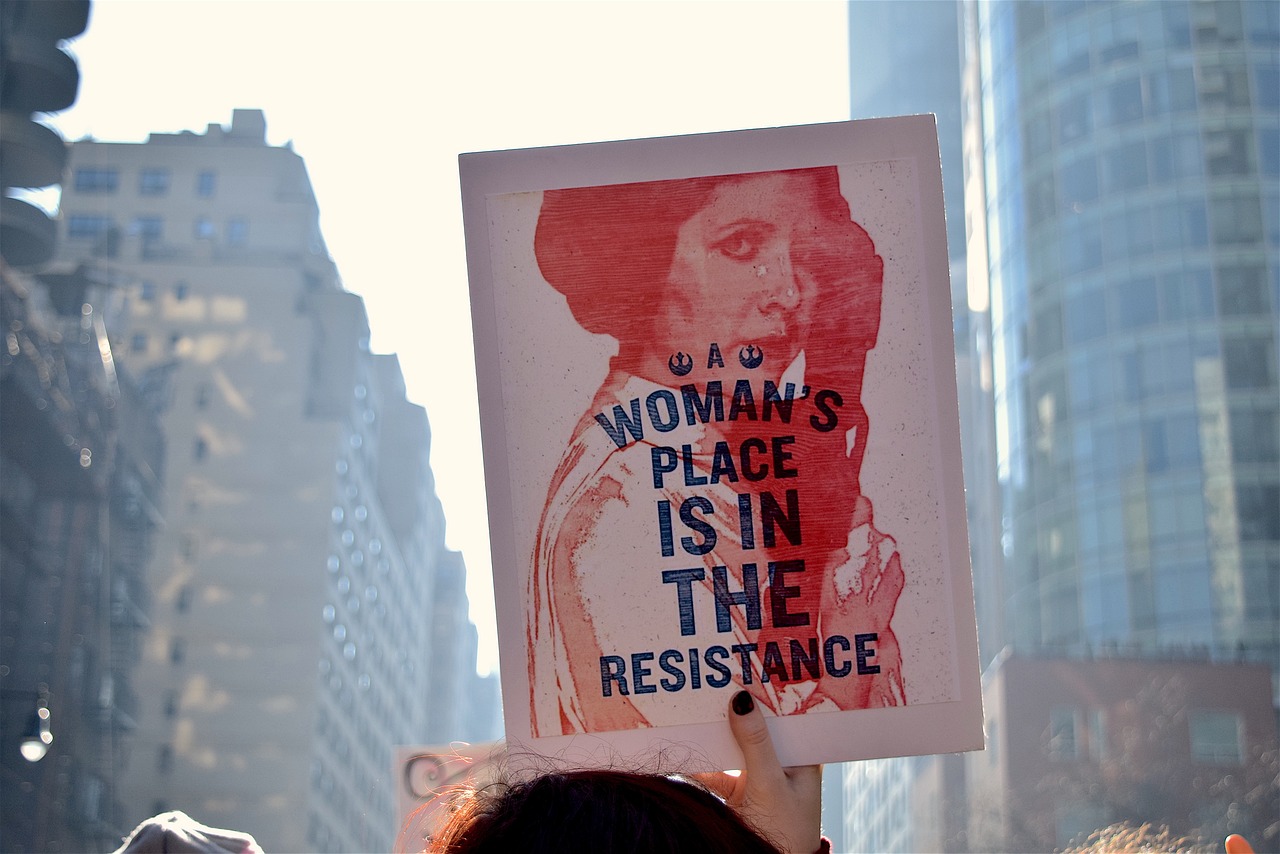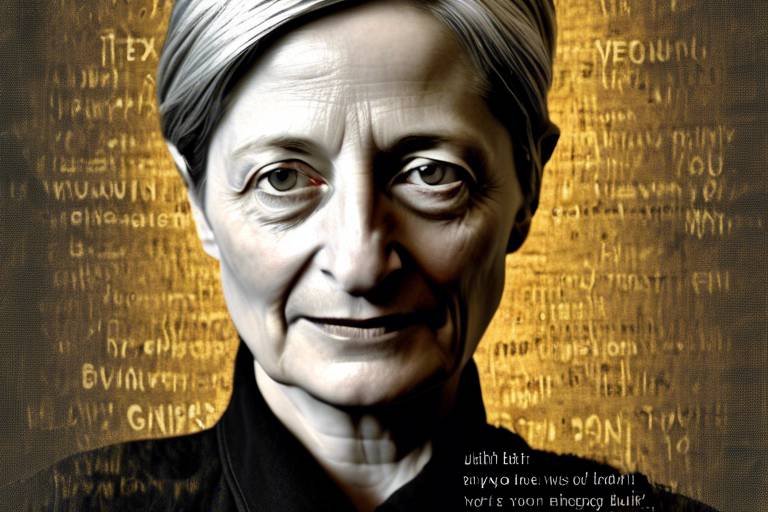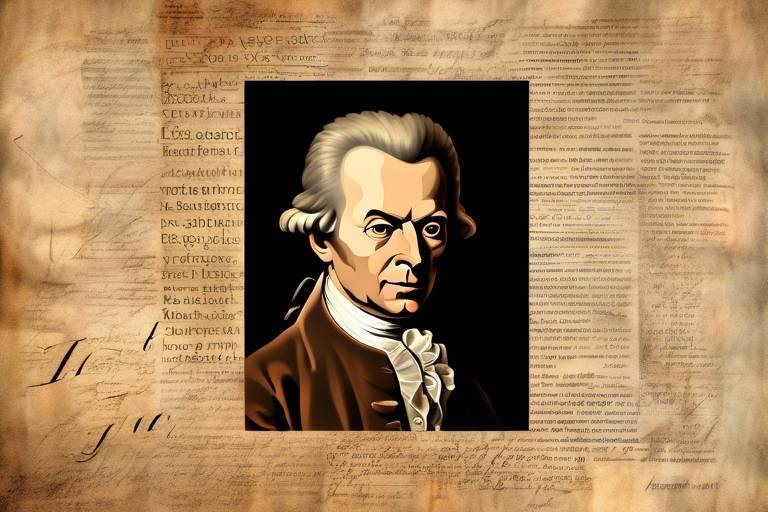Beyond the Veil: Engaging with Judith Butler’s Gender Theory
Judith Butler's gender theory has sparked a revolution in how we think about identity and societal norms. Imagine a world where gender isn’t just a label stamped on us at birth but a dynamic performance shaped by our actions and interactions. This is the essence of Butler's work, which invites us to peel back the layers of our understanding and explore the complexities of gender. It’s as if she hands us a mirror, urging us to reflect on how our behaviors and societal expectations construct our identities. In this article, we will embark on a journey through Butler's groundbreaking ideas, examining their implications for identity, performance, and the very fabric of society itself.
At the heart of Butler's theory is the concept of gender performativity. This idea flips traditional views on their head, suggesting that gender is not an inherent trait but rather something we perform through repeated behaviors and societal norms. Think of it like a play where each of us takes on a role, acting out scripts written by culture and tradition. This performance is not just a façade; it shapes how we perceive ourselves and how society perceives us. For instance, when someone dresses in a way that aligns with societal expectations of masculinity or femininity, they are engaging in a performance that reinforces those gender norms. By recognizing this, we can begin to understand that our identities are fluid and constantly evolving, influenced by the contexts in which we find ourselves.
Language is another crucial element in Butler’s theory. It’s not just a tool for communication; it actively constructs our understanding of gender. When we describe ourselves or others, the words we choose can either reinforce or challenge societal norms. Butler argues that language has the power to shape reality. For example, consider how the terms we use to define gender can either uphold traditional binaries or open up space for more inclusive definitions. The language we employ becomes a battleground for identity, reflecting our beliefs and influencing how we navigate our social worlds. This interplay between language and identity is vital, as it highlights the importance of being mindful about the words we use and their implications.
While Butler’s theories have been groundbreaking, they have not been without their critics. Some argue that her concepts are too abstract, making them difficult to apply in real-world situations. Others contend that her focus on performativity overlooks the material realities of individuals’ lives, particularly those from marginalized communities. Critics of Butler often emphasize the need for a more intersectional approach, one that considers how race, class, and other identities intersect with gender. This critique is essential as it pushes for a more nuanced understanding of identity that acknowledges the complexities of lived experiences.
Speaking of intersectionality, Butler’s work is particularly relevant in discussions about how different identities interact. Gender does not exist in a vacuum; it intersects with various aspects of identity, including race, class, and sexuality. This intersectional lens allows us to see how individuals experience oppression and privilege in unique ways. For example, a Black woman may face different societal challenges than a white woman or a Black man, highlighting the necessity of considering multiple identities in our analysis of gender. Butler’s work encourages us to embrace this complexity, urging us to think critically about how our various identities shape our experiences and perceptions of the world.
Judith Butler is often hailed as a foundational figure in queer theory. Her ideas challenge the traditional notions of heterosexuality as the norm and expand the possibilities for understanding sexual identity. By deconstructing the binary view of gender and sexuality, Butler opens the door for a more fluid understanding of identity that resonates with many in the LGBTQ+ community. Her work encourages individuals to embrace their unique identities and question societal expectations, fostering a sense of empowerment and authenticity.
The implications of Butler’s theories extend far beyond academia; they have significant political ramifications as well. Her ideas inform contemporary feminist and LGBTQ+ movements, advocating for social change and challenging oppressive structures. For instance, the notion of gender performativity has been utilized in activism to highlight how societal norms can be subverted. Movements that challenge gender binaries and advocate for greater inclusivity draw upon Butler’s work to argue for a more equitable society. This intersection of theory and activism illustrates the power of Butler’s ideas in shaping the political landscape.
Butler’s theories are not confined to Western contexts. They resonate in global discussions of gender, where diverse interpretations and applications emerge. For instance, in some cultures, traditional gender roles are deeply entrenched, while in others, there is a growing movement towards gender fluidity and inclusivity. By examining Butler’s work through a global lens, we can appreciate how her ideas are adapted and challenged in various cultural settings, highlighting the universality and specificity of gender issues worldwide.
Finally, Judith Butler's theories continue to shape contemporary feminism. Her ideas influence current feminist discourse, addressing critical issues such as body politics, representation, and activism in the digital age. As feminism evolves, Butler's insights remind us to question the status quo and advocate for a more inclusive and equitable society. In a world where social media amplifies voices, Butler’s work serves as a guiding light, encouraging activists to challenge oppressive norms and push for change.
- What is gender performativity? Gender performativity is the concept that gender is not a fixed trait but rather something we enact through our behaviors and societal expectations.
- How does language shape gender identity? Language plays a crucial role in constructing our understanding of gender, influencing societal norms and personal identities.
- What are some critiques of Butler's theory? Critics argue that her theories can be abstract and may overlook the material realities of individuals' lives, particularly regarding intersectionality.
- What is intersectionality? Intersectionality is the concept that various aspects of identity, such as race, class, and gender, intersect and shape individual experiences of oppression and privilege.
- How has Butler influenced queer theory? Butler challenges traditional notions of gender and sexuality, expanding the possibilities for understanding sexual identity and fostering empowerment in the LGBTQ+ community.

Understanding Gender Performativity
Judith Butler’s concept of gender performativity is a revolutionary idea that flips traditional notions of gender on their heads. Instead of viewing gender as a fixed trait, Butler suggests that it is something we do rather than something we are. Imagine gender as a performance—like actors on a stage—where each of us plays a role shaped by societal expectations and cultural norms. This idea challenges the very foundation of how we understand identity, suggesting that our actions and behaviors are what construct our gender identities.
At the core of Butler’s theory lies the assertion that gender is not innate but is expressed through repeated behaviors and societal cues. For instance, think about how children learn to be boys or girls. From a young age, they are bombarded with messages about how to dress, speak, and behave based on their assigned gender. These messages serve as scripts that individuals learn to perform, reinforcing the idea that gender is a series of acts rather than a stable identity. This is why Butler famously states, “gender is always a doing.”
To illustrate this further, consider the following examples of how gender performativity manifests in everyday life:
- Clothing Choices: The decision to wear a dress or a suit is often influenced by societal norms that dictate what is considered appropriate for different genders.
- Body Language: The way someone stands, walks, or gestures can convey gendered messages that align with or challenge traditional norms.
- Language Use: The words we choose and how we express ourselves can reinforce or subvert gender expectations.
Butler’s theory emphasizes that these performances are not merely personal choices but are deeply embedded in the social fabric. They reflect and reproduce the power dynamics and hierarchies present in society. For example, when someone deviates from expected gender norms, they often face social repercussions, which illustrates how tightly woven gender is into the societal structure.
This brings us to an essential aspect of Butler's theory: the idea of subversion. By recognizing that gender is performative, individuals can also find ways to disrupt and challenge traditional norms. Acts of resistance can be as simple as a person choosing to wear clothing that defies gender expectations or as complex as engaging in activism that questions the very foundations of gender identity. In this sense, Butler not only critiques the existing frameworks of gender but also opens up possibilities for new identities and expressions to emerge.
In conclusion, understanding gender performativity is crucial for grasping the complexities of identity in our contemporary world. Butler’s insights encourage us to question the status quo and recognize that gender is fluid, shaped by both individual actions and collective societal norms. By viewing gender as a performance, we can begin to see the potential for change and the power of individual agency in reshaping our understanding of identity.

The Role of Language in Gender Identity
Language is not just a tool for communication; it is a powerful instrument that shapes our understanding of the world around us. When it comes to gender identity, Judith Butler posits that language plays a crucial role in not only reflecting but also constructing our perceptions of gender. This concept challenges the very essence of how we categorize ourselves and others in society. Think about it: the words we use can reinforce stereotypes or, conversely, break them down. For instance, terms like "masculine" and "feminine" are not just descriptors; they carry with them a host of societal expectations and norms that dictate how individuals should behave based on their assigned gender.
Butler argues that the language surrounding gender is inherently performative. This means that when we use language to express our gender, we are not merely describing an innate quality; we are actively participating in the construction of our identity. Each time we identify ourselves as "he," "she," or any other gender identifier, we are engaging in a performance that reflects societal norms and expectations. This performative aspect of language underscores the idea that gender is not a static attribute but rather a dynamic process shaped by ongoing interactions and societal discourse.
Moreover, the implications of Butler's theories extend beyond individual identity. Language has the power to challenge and reshape societal norms. For example, the growing acceptance of non-binary and genderqueer identities in recent years has prompted a shift in language usage. Terms like "they/them" as singular pronouns are gaining traction, reflecting a broader understanding of gender as a spectrum rather than a binary choice. This evolution of language is not just a trend; it signifies a deeper cultural shift towards inclusivity and recognition of diverse identities.
In many ways, language acts as both a mirror and a mold—reflecting existing gender norms while simultaneously shaping new understandings of identity. For instance, consider the following table that illustrates how language can influence gender perception:
| Language Usage | Impact on Gender Perception |
|---|---|
| Gendered Pronouns (he/she) | Reinforces binary gender norms |
| Gender-neutral Pronouns (they/them) | Challenges traditional gender binaries |
| Descriptive Labels (feminine/masculine) | Shapes societal expectations of behavior |
| Inclusive Language (partner/spouse) | Validates diverse relationships and identities |
As we navigate the complexities of gender identity, it is essential to recognize the role of language in both personal and societal contexts. The words we choose to use can either empower or constrain individuals, influencing how they see themselves and how they are perceived by others. In this sense, Butler's work invites us to engage critically with the language surrounding gender, encouraging a more nuanced understanding of identity that transcends traditional binaries.
Ultimately, the conversation around language and gender identity is ongoing. As society continues to evolve, so too does our understanding of the words we use. Embracing this fluidity can lead to a more inclusive world, where individuals are free to express their identities without the constraints of outdated norms. So, the next time you think about gender, consider how language shapes your perceptions and interactions. After all, words have the power to build bridges or create barriers; it's up to us to choose wisely.

Critiques of Butler’s Theory
Judith Butler’s groundbreaking theories on gender have undeniably reshaped the landscape of gender studies, but they are not without their critics. One of the primary critiques revolves around the accessibility of Butler's ideas. Many argue that her dense and abstract writing style can alienate readers, especially those who are new to feminist theory. This complexity raises an important question: How can we engage with such profound ideas if we struggle to understand the language in which they are presented?
Moreover, critics have pointed out that Butler’s concept of gender performativity, while revolutionary, may oversimplify the lived experiences of individuals. For instance, the notion that gender is merely a performance can overlook the deeply entrenched societal structures and material conditions that influence identity formation. Critics argue that this perspective risks reducing gender to a series of behaviors, ignoring the emotional and psychological dimensions that come with identity. In this sense, Butler's theories might be seen as detached from the realities faced by many individuals who navigate complex social landscapes.
Another significant critique is related to the intersectionality of identities. While Butler acknowledges the importance of different identities, some scholars feel that her work does not fully engage with how race, class, and sexuality intersect to shape individual experiences of gender. For example, a white, middle-class woman may experience gender differently than a woman of color from a lower socioeconomic background. Critics argue that without a robust consideration of these intersecting identities, Butler's theories may inadvertently reinforce certain privileges while marginalizing others.
Furthermore, some have challenged the applicability of Butler's theories in various cultural contexts. Critics argue that her focus on Western norms and experiences may not translate well to non-Western societies, where gender roles and expectations can differ significantly. This raises another crucial question: Are Butler's theories universal, or are they confined to a specific cultural milieu? In exploring this, we must consider the diverse interpretations and adaptations of her work across different cultural landscapes.
Despite these critiques, it is essential to recognize that Butler's theories have sparked vital discussions about gender and identity. They have encouraged scholars and activists alike to question traditional notions of gender and to explore the fluidity of identity. In doing so, Butler has opened the door for a more nuanced understanding of gender, even if her theories are not without their limitations.
In summary, while Judith Butler's contributions to gender theory are monumental, they invite ongoing dialogue and critique. Engaging with these critiques not only enriches our understanding of Butler's work but also encourages the evolution of gender theory itself. As we navigate the complexities of identity, it’s crucial to keep asking questions and seeking diverse perspectives to ensure a more inclusive discourse.
- What is gender performativity? Gender performativity is the concept that gender is not an inherent trait but rather something that is enacted through repeated behaviors and societal expectations.
- Why is Butler's writing considered complex? Butler's writing often employs dense theoretical language and abstract concepts, which can be challenging for readers unfamiliar with feminist theory.
- How does intersectionality relate to Butler’s theory? Intersectionality examines how various identities, such as race, class, and sexuality, intersect and influence individual experiences of gender, a dimension that some critics feel Butler's work does not fully address.
- Can Butler's theories be applied globally? Critics argue that Butler's theories, primarily rooted in Western contexts, may not be universally applicable, as gender roles vary significantly across different cultures.

Intersectionality and Gender
When we talk about gender, it’s essential to recognize that it doesn’t exist in a vacuum. Judith Butler’s work, while groundbreaking in its own right, opens the door to a much broader conversation about how different aspects of identity intersect. This is where the concept of intersectionality comes into play, a term popularized by Kimberlé Crenshaw that highlights how various social categories—such as race, class, gender, and sexuality—overlap and create unique experiences of oppression and privilege.
Butler's theories encourage us to think critically about how our understanding of gender is influenced by these intersecting identities. For instance, a Black woman may experience gender discrimination differently than a white woman, not just because of her gender but also due to her race. This layered experience is crucial in understanding the complexities of identity. It’s like viewing a painting; you can see the overall image, but once you look closer, you notice the intricate brush strokes and colors that contribute to the final masterpiece.
In Butler's view, gender is not merely a social construct but a performance shaped by the expectations and norms of various intersecting identities. This means that our understanding of what it means to be a man, woman, or non-binary person is colored by factors like socio-economic status, cultural background, and personal experiences. The interplay of these identities creates a rich tapestry that informs our sense of self and our interactions with the world around us.
To illustrate this point, consider the following table that outlines how different identities can intersect to shape unique experiences:
| Identity Factor | Possible Experiences |
|---|---|
| Race | Different cultural expectations and stereotypes affecting gender roles. |
| Class | Access to resources that influence gender expression and opportunities. |
| Sexuality | Different societal norms and pressures based on sexual orientation. |
| Disability | Challenges in navigating gender identity in relation to physical or mental health. |
As we dissect these intersections, it becomes clear that Butler's theories are not just academic musings; they are deeply relevant to our understanding of the real world. They push us to acknowledge that gender cannot be understood in isolation but must be viewed through the lens of other identities. This holistic approach is vital for creating inclusive spaces where all voices are heard and valued.
In contemporary discussions, the call for intersectionality is louder than ever. Activists and scholars alike are advocating for a more nuanced understanding of gender that considers the myriad ways different identities interact. This is particularly important in movements for social justice, where the goal is to uplift everyone, not just a select few. By incorporating intersectional perspectives, we can challenge the dominant narratives that often overlook marginalized voices and experiences.
Ultimately, embracing intersectionality in discussions of gender not only enriches our understanding but also fosters a more compassionate society. It reminds us that while we may have different experiences, we are all part of a larger human experience, interconnected and interdependent. So, the next time you engage in conversations about gender, remember to consider the intersections that shape our identities. After all, the beauty of humanity lies in its diversity.
- What is intersectionality? Intersectionality is a framework for understanding how various social identities overlap and interact, influencing experiences of oppression and privilege.
- How does Butler's theory relate to intersectionality? Butler's theory emphasizes that gender is a performance shaped by intersecting identities, highlighting the complexity of individual experiences.
- Why is intersectionality important in gender discussions? It ensures that all voices are heard and valued, promoting inclusivity and understanding in social justice movements.

Butler’s Influence on Queer Theory
Judith Butler stands as a towering figure in the realm of queer theory, reshaping how we think about gender and sexuality. Her groundbreaking work has not only challenged conventional ideas about gender but has also provided a rich framework for understanding the complexities of sexual identity. Imagine a world where gender is not a static label but a dynamic performance, much like a play where actors can change roles and interpretations with each performance. This is the essence of Butler's influence.
At the heart of Butler's theory is the idea of gender performativity, which posits that gender is not something we are, but something we do. This notion has profound implications for queer theory, as it dismantles the binary understanding of gender and opens the door for a spectrum of identities. Instead of viewing gender as a fixed category, Butler encourages us to see it as a fluid and evolving construct, shaped by societal norms and individual actions. This perspective invites a more inclusive understanding of gender, accommodating those who identify outside the traditional male-female binary.
Butler’s work has also sparked essential discussions about the relationship between sexuality and power. By linking gender performativity to the exercise of power, she reveals how societal expectations can dictate not only how we express our gender but also how we experience our sexuality. This interplay between identity and power dynamics is crucial for queer theorists who seek to understand the societal structures that marginalize non-heteronormative identities. In this sense, Butler's theories serve as a toolkit for activists and scholars alike, providing the means to critique and challenge oppressive systems.
Moreover, Butler’s ideas have led to a broader conversation about intersectionality within queer theory. While her work primarily focuses on gender and sexuality, it also encourages an exploration of how race, class, and other identities intersect with these categories. This holistic approach is vital for understanding the lived experiences of individuals who navigate multiple identities, allowing for a richer and more nuanced discourse within queer studies. Butler's influence can be seen in various contemporary queer movements that advocate for a more inclusive and intersectional approach to activism.
To illustrate Butler's impact on queer theory, consider the following table that highlights key concepts and their implications:
| Concept | Implication for Queer Theory |
|---|---|
| Gender Performativity | Challenges fixed gender identities; promotes fluidity in gender expression. |
| Power Dynamics | Links societal power structures to gender and sexuality, revealing mechanisms of oppression. |
| Intersectionality | Encourages the examination of multiple identities and their impact on individual experiences. |
In summary, Judith Butler's contributions to queer theory are nothing short of revolutionary. By deconstructing traditional notions of gender and sexuality, she has paved the way for a more inclusive understanding of identity that resonates with many in the LGBTQ+ community. Her work not only challenges the status quo but also empowers individuals to embrace their identities in all their complexity. As we continue to navigate the evolving landscape of gender and sexuality, Butler's influence remains a guiding light, encouraging us to question, explore, and celebrate the diversity of human experience.

Gender and Politics
Judith Butler's theories extend far beyond the realm of academic discourse; they ripple through the fabric of our political landscape, challenging the very foundations of power dynamics. When we think about , it’s essential to recognize that Butler’s ideas advocate for a re-examination of how gender identities are constructed and perceived within societal structures. In a world where traditional gender roles often dictate political representation and participation, Butler's work serves as a clarion call for inclusivity and activism.
At the heart of Butler's political implications is the notion that gender is not a static category but rather a fluid construct shaped by societal norms and expectations. This understanding invites us to question the binary frameworks that have historically governed political discourse. For instance, consider how political parties often align themselves with specific gender norms, which can marginalize those who do not conform. Butler posits that by recognizing the performative nature of gender, we can dismantle these rigid categories and advocate for a more inclusive political landscape.
Moreover, Butler's theories inform contemporary feminist and LGBTQ+ movements, pushing for a radical rethinking of social justice and equity. Her work encourages activists to challenge oppressive structures that perpetuate inequality. For example, when discussing issues like reproductive rights, gender-based violence, or LGBTQ+ rights, Butler's insights highlight the interconnectedness of these struggles. They remind us that political advocacy must embrace a multifaceted approach that considers the diverse experiences of individuals across the gender spectrum.
Butler's impact is particularly evident in the rise of intersectional feminism, which recognizes that gender cannot be understood in isolation from other identity markers like race, class, and sexuality. This intersectional lens is crucial for addressing the complexities of political representation. It urges us to ask critical questions:
- How do race and socioeconomic status influence one's experience of gender?
- In what ways can political movements be more inclusive of non-binary and transgender voices?
- How can activism address the unique challenges faced by marginalized communities within the broader feminist movement?
The political implications of Butler's work resonate across various movements, from grassroots activism to global campaigns for gender equality. As we witness the rise of social media as a platform for activism, Butler’s ideas about the performative nature of identity become even more relevant. Social media allows individuals to express their identities in ways that challenge traditional norms, fostering a sense of community and solidarity among those who have been historically marginalized.
In conclusion, Judith Butler’s theories serve as a powerful tool in the fight for gender justice and political representation. By advocating for a nuanced understanding of gender, Butler encourages us to rethink our political structures and engage in activism that is inclusive, intersectional, and transformative. The challenge now lies in translating these theoretical insights into tangible political action that can reshape the landscape for future generations.

Global Perspectives on Butler’s Ideas
Judith Butler's theories on gender and identity extend far beyond the confines of Western thought, resonating across various cultures and societies worldwide. Her concept of gender performativity has sparked discussions not only in academic circles but also in grassroots movements, prompting individuals to reconsider their own identities and the societal norms that shape them. In many non-Western contexts, Butler's ideas challenge traditional gender roles and expectations, offering a framework for understanding the fluidity of identity.
In regions where rigid gender binaries have historically dictated social structures, Butler's theory serves as a liberating force. For example, in parts of South Asia, where cultural norms often enforce strict gender roles, activists have utilized Butler's ideas to advocate for the rights of transgender and non-binary individuals. This has led to a growing recognition of diverse gender identities, which were previously marginalized or ignored. By emphasizing that gender is not an innate quality but rather a performance shaped by societal expectations, Butler provides a powerful lens through which to view and challenge these norms.
Moreover, Butler's work has influenced feminist movements globally, particularly in addressing issues of intersectionality. In many African countries, where colonial legacies continue to affect gender relations, Butler's emphasis on the interconnectedness of various identities—such as race, class, and sexuality—has informed local feminist discourses. Activists are increasingly recognizing that gender cannot be examined in isolation from other social categories, leading to a more nuanced understanding of oppression and resistance.
To illustrate the global impact of Butler’s ideas, we can look at several key regions:
| Region | Influence of Butler’s Ideas |
|---|---|
| South Asia | Advocacy for transgender rights and recognition of fluid gender identities. |
| Africa | Integration of intersectionality in feminist movements, addressing colonial legacies. |
| Latin America | Challenging machismo culture and promoting LGBTQ+ rights through performative theories. |
| Middle East | Activism against gender-based violence, emphasizing the performative aspects of gender. |
In Latin America, Butler's theories have been instrumental in challenging the deeply entrenched machismo culture. Feminist activists have drawn upon her work to argue that gender is not a static attribute but rather a set of behaviors and performances that can be redefined. This has led to a vibrant discourse around masculinity and its expectations, pushing for a more equitable understanding of gender roles.
In the Middle East, where gender-based violence remains a critical issue, Butler's insights into the performative nature of gender have empowered activists to confront and dismantle oppressive structures. By framing gender as a performance, they highlight how societal norms can be contested and reshaped, advocating for a future where gender equality is not just an aspiration but a reality.
Ultimately, Butler’s theories encourage a broader conversation about identity that transcends cultural boundaries. They invite individuals to reflect on their own experiences and the societal constructs that influence them. As we continue to explore gender in a global context, Butler’s work remains a vital touchstone, inspiring movements and discussions that seek to redefine what it means to be human in all its diverse expressions.
- What is gender performativity? Gender performativity is the idea that gender is not an inherent quality but is constructed through repeated behaviors and societal expectations.
- How has Judith Butler influenced global feminist movements? Butler's work has provided a framework for understanding gender as fluid and interconnected with other identities, inspiring activists around the world to advocate for gender equality.
- What role does intersectionality play in Butler's theories? Intersectionality highlights how various social categories, such as race and class, intersect and influence individuals' experiences of gender, allowing for a more nuanced understanding of oppression.

Butler in Contemporary Feminism
Judith Butler's theories have become a cornerstone of contemporary feminism, reshaping how we understand gender, identity, and the politics surrounding them. In a world where traditional gender roles are increasingly challenged, Butler's insights provide a critical lens through which to examine the complexities of gender identity and expression. Her concept of gender performativity suggests that gender is not an inherent trait but rather a series of behaviors and performances that are socially constructed and reinforced. This notion has empowered feminists to advocate for a more fluid understanding of gender, allowing individuals to express themselves beyond binary classifications.
One of the most significant ways Butler's work influences contemporary feminism is through its emphasis on the performative nature of gender. By recognizing that gender is something we do rather than something we are, feminists can challenge rigid societal norms that dictate how individuals should behave based on their assigned gender at birth. This shift in perspective opens up a space for non-binary, genderqueer, and transgender identities to be recognized and validated within feminist discourse. As a result, contemporary feminist movements increasingly advocate for inclusivity, ensuring that all voices are heard and represented.
Moreover, Butler's theories intersect with issues of body politics, representation, and activism in the digital age. In a time when social media platforms amplify diverse voices, Butler's ideas encourage feminists to consider how these platforms can both challenge and perpetuate gender norms. The online world serves as a double-edged sword, where individuals can express their identities freely, yet also face backlash and harassment. Butler's work prompts feminists to navigate this complex landscape thoughtfully, advocating for digital spaces that foster inclusivity and respect.
To further illustrate Butler's impact on contemporary feminism, consider the following key areas:
- Body Politics: Butler's work has influenced discussions around body image, autonomy, and the politics of appearance. Feminists are increasingly addressing how societal expectations shape our understanding of acceptable bodies.
- Representation: Butler's emphasis on the performative aspects of gender has led to a broader understanding of representation in media and culture. Feminists are now more attuned to the importance of diverse representations of gender and sexuality.
- Activism: In the digital age, Butler's theories encourage activists to rethink their strategies, using online platforms to mobilize support while remaining aware of the potential for exclusion and harassment.
In conclusion, Judith Butler's contributions to contemporary feminism are profound and multifaceted. By challenging traditional notions of gender and advocating for a more inclusive understanding of identity, Butler's work continues to inspire feminists worldwide. As discussions around gender evolve, her theories remain relevant, encouraging activists to push boundaries and create a more equitable society for all.
- What is Judith Butler's main contribution to feminism? Judith Butler's main contribution lies in her theory of gender performativity, which argues that gender is a social construct performed through repeated behaviors rather than an innate quality.
- How does Butler's work influence modern feminist movements? Butler's work encourages inclusivity and challenges traditional gender norms, allowing for a broader understanding of gender identities in feminist discourse.
- What role does language play in Butler's theory? Language is crucial in Butler's theory, as it not only reflects but also constructs our understanding of gender, shaping societal norms and personal identities.
Frequently Asked Questions
- What is Judith Butler’s concept of gender performativity?
Judith Butler’s concept of gender performativity suggests that gender is not an inherent trait, but rather something that is performed through repeated actions and behaviors. This means that our understanding of gender is shaped by societal norms and expectations, which are enacted over time. It's like learning a dance; you practice the steps, and eventually, it becomes second nature.
- How does language influence gender identity according to Butler?
Butler argues that language is a powerful tool that not only reflects our understanding of gender but also actively constructs it. The words we use can shape our identities and influence how society perceives us. Think of language as a lens; it colors the way we see the world and ourselves within it.
- What are some common critiques of Butler’s theories?
While Butler's theories have been groundbreaking, critics often point to their complexity and accessibility. Some argue that her ideas can be difficult to apply in real-world contexts, especially when considering intersectionality and material conditions. It's like trying to fit a square peg into a round hole; sometimes, the theory doesn’t align perfectly with lived experiences.
- How does intersectionality relate to Butler’s work?
Intersectionality adds depth to Butler’s theories by highlighting how different identities—such as race, class, and sexuality—intersect and impact our experiences of gender. This approach emphasizes that gender cannot be understood in isolation but must be viewed in the context of various social factors. It's like a tapestry, where each thread contributes to the overall picture.
- What impact has Butler had on queer theory?
Judith Butler is considered a foundational figure in queer theory, as her work challenges traditional notions of sexuality and gender. Her ideas encourage a broader understanding of sexual identity, pushing against heteronormative assumptions. It’s like breaking down walls to create a more inclusive space for diverse identities to flourish.
- How do Butler’s theories inform contemporary feminist movements?
Butler’s theories have significant political implications, informing contemporary feminist and LGBTQ+ movements. Her work advocates for social change by challenging oppressive structures and promoting a more nuanced understanding of identity. It’s like a rallying cry for those seeking justice and equality in a world that often favors the status quo.
- Are Butler’s ideas relevant in global discussions of gender?
Yes, Butler’s theories resonate in global discussions of gender, as they offer insights that transcend Western contexts. Different cultures interpret and apply her ideas in various ways, enriching the global discourse on gender. It’s like a seed that grows in different soils, adapting and flourishing in diverse environments.
- How do Butler’s theories shape contemporary feminist discourse?
Butler’s ideas continue to influence contemporary feminist discourse by addressing issues such as body politics, representation, and activism, especially in the digital age. Her work encourages feminists to rethink traditional narratives and embrace a more inclusive approach. It’s like a compass guiding movements towards more equitable futures.



















